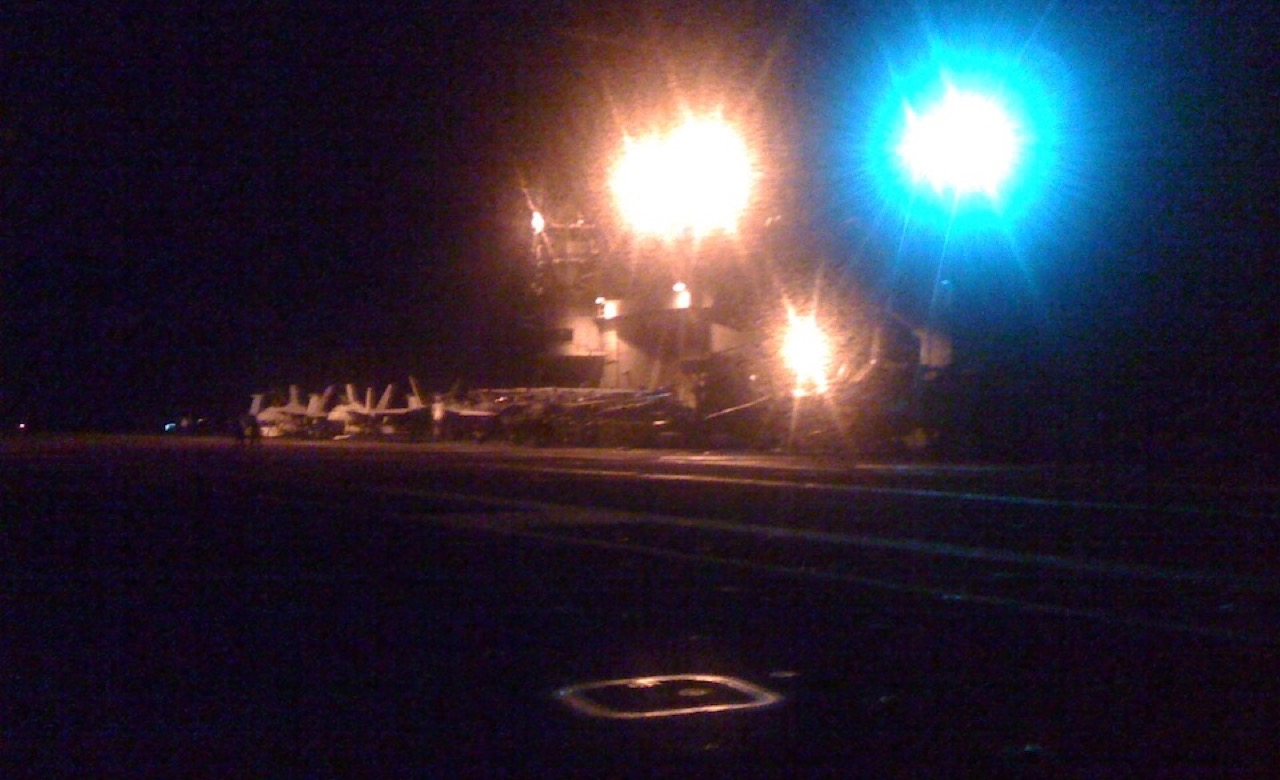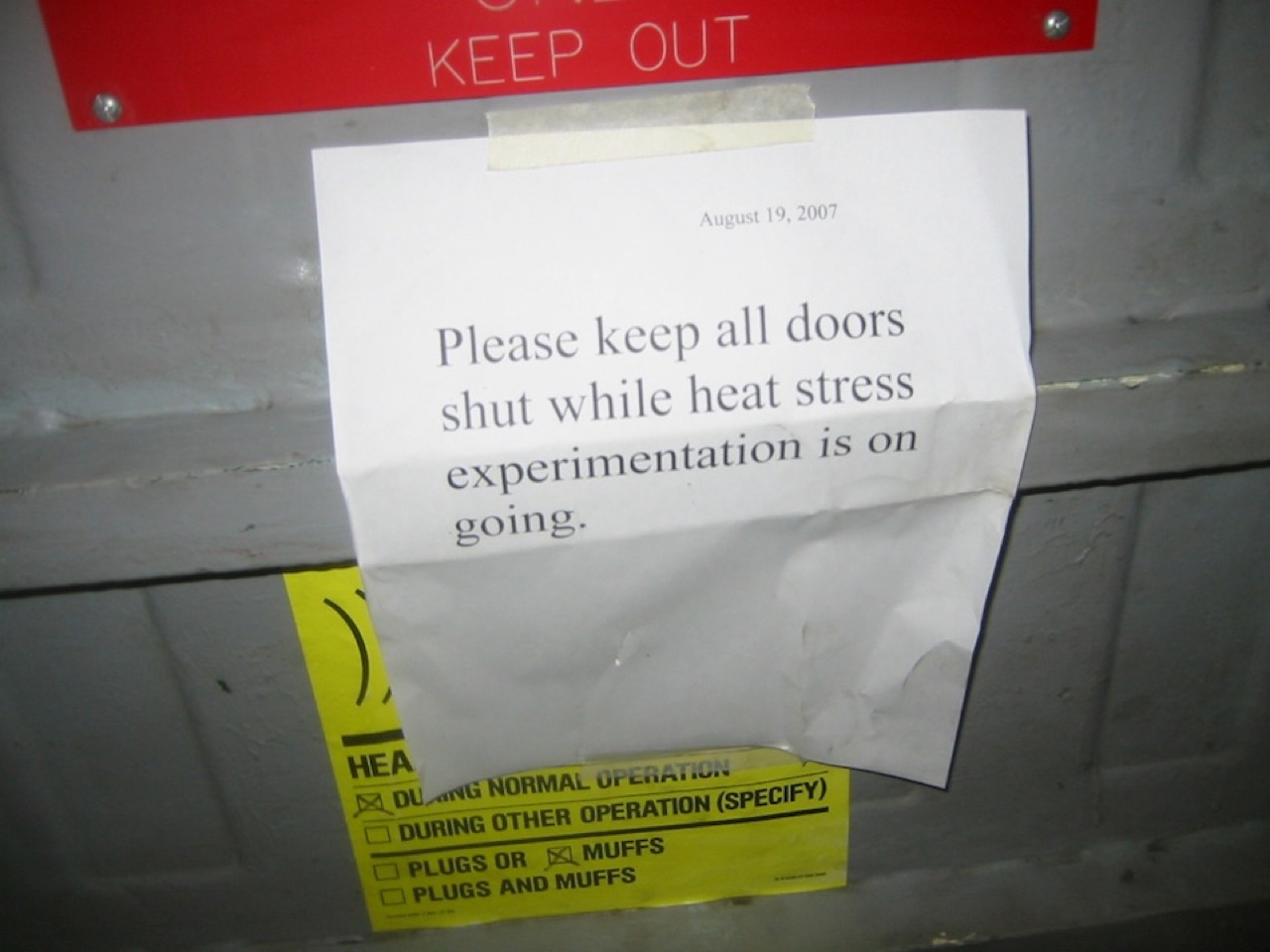Chris Hadfield is the commander of Expedition 35 on the International Space Station. He regularly posts beautiful photos from the ISS to his Twitter feed, and this morning he uploaded a short recording of sounds from inside different parts of the station.
Listening to these recordings reminded me of living on an aircraft carrier. Flight operations usually end well after midnight. By the time the day’s paperwork is done, the lights in the ship’s interior have been switched to red and most everybody is in the rack. These late quiet moments were always my favorite time of day.

The flight deck at night
I remember walking back to my stateroom through the long, dark, empty passageways, listening to the changing cacaphony of whirring, buzzing, whooshing sounds coming from each compartment along the way. After a few months you get to know these aural landmarks so well you can almost navigate by them.
It’s easy to abstract away the idea of an aircraft carrier or space station as a monolithic object. In reality the people who crew them are living in the guts of a massive machine. Everything—even empty spaces—aboard one of these masterpieces of technology is there for a reason, and it’s almost never to make you comfortable. They were put there to get the job done and/or keep you alive.

Heat Stress Experimentation
These great machines are feats of human engineering. They have long lives of their own—in the case of an aircraft carrier, up to fifty years. It was a wonderful (and often hot, boring, and painful) privilege to live and work inside.
